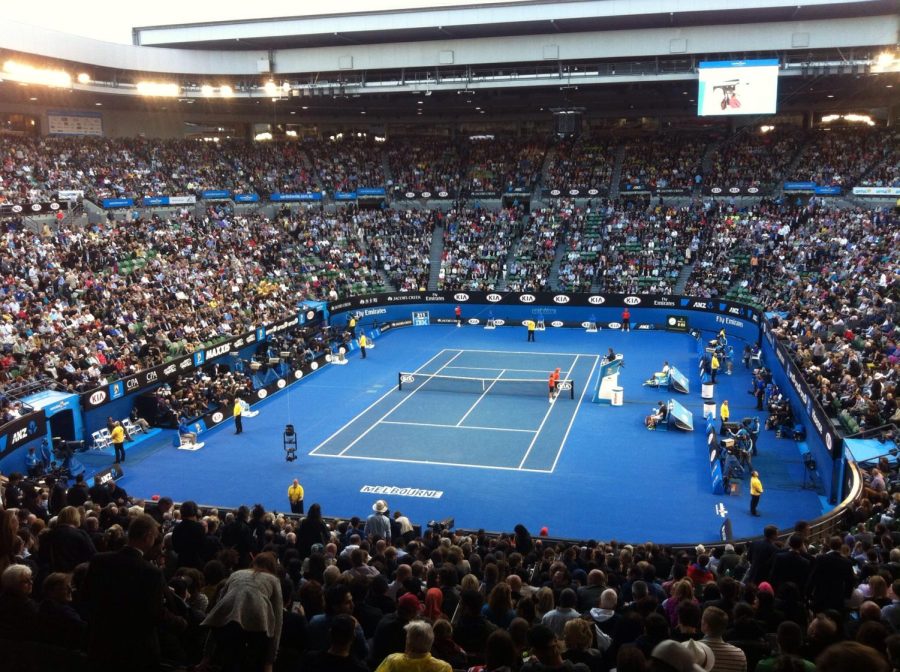Australian Open: Recap
February 17, 2022
It’s the match point. Both players stand on either side of the court, attentive, as one prepares to serve. Silence is suspended in the stadium and there’s a great anticipation. The server bounces the ball, dispersing a monotonous sound into the crowd. All of a sudden, the server launches the ball into the air and slams it with a slight grunt. The ball, a bright yellow light, zooms back and forth across the court as each player tenaciously tries to beat their opponent. The crowd watches closely as the point unravels. The athletes exhaust one other until one is finally unable to return the ball. When the point ends, the arena explodes with booming applause as they show their honor towards the champion.
This year, it was a privilege to be able to have watched the Australian Open, as it may have been one of the most eventful and exciting tournaments in a long time. It started off with an unforeseen predicament when Serbian tennis player Novak Djokovic was deported from Australia after he didn’t fulfill the vaccination requirement to enter the country. This led to an increased chance of success among lower-ranked players against more prominent competitors. The Australian Open eventually ended with Rafael Nadal, who reached an unprecedented victory that put him as the first male tennis player to reach 21 Grand Slam titles. Obviously, this is very unfortunate for Daniil Medvedev who was beaten by Nadal for the ground-breaking record. The final score of their game was 2-6, 6²-7⁷, 6-4, 6-4, 7-5, in which Medvedev won the first two sets and Nadal won the next three. However, this was not Nadal’s first time winning a match after a two-set deficit. He had actually done it three times prior to the Australian Open. The first time was at the 2005 Madrid Open final against Ivan Ljubičić, the second time was in round two of Wimbledon in 2006, and the last time was in the succeeding year, in the fourth round of Wimbledon. His experience was an integral factor that led to his win in the championship.
On the women’s side, it came down to Ashleigh Barty and Danielle Collins in the final game. The victory went to Barty who won 6-3, 7⁷-6², marking her third Grand Slam. Collins didn’t cause much trouble for Barty as she failed to win a set, causing the game to be more on the uneventful side. Nonetheless, the game came to an end with a smashing shot from Barty while Collins was on the attack. The point started with a powerful serve from Collins, giving her the opportunity to hit the ball angularly to Barty’s left side of the court. She then hit another offensive shot and migrated to the net, but was caught off guard by Barty’s response as the ball sailed past her right side.
At the end of the tournament, the winners acquired generous amounts of money as gratification for their hard work and expertise in the sport. For their earnings, both female and male champions received a total of $2,875,000 while the runner-ups earned $1,575,000. These generous prize sums are greater than last year’s winnings. In 2021, the tournament handed a smaller purse due to it being severely affected by COVID-19. According to The Sporting News, “The $2.75 million taken home by the winners was the lowest total at the Australian Open since 2014.” The winners are very fortunate to be able to collect this number as it will greatly serve them in pursuing the rest of their professional careers.
It is justified to offer a congratulations to the champions and the rest of the participants of this year’s Australian Open. It was overall a very successful and entertaining event to watch—something you do not want to miss out on.

















































































































































